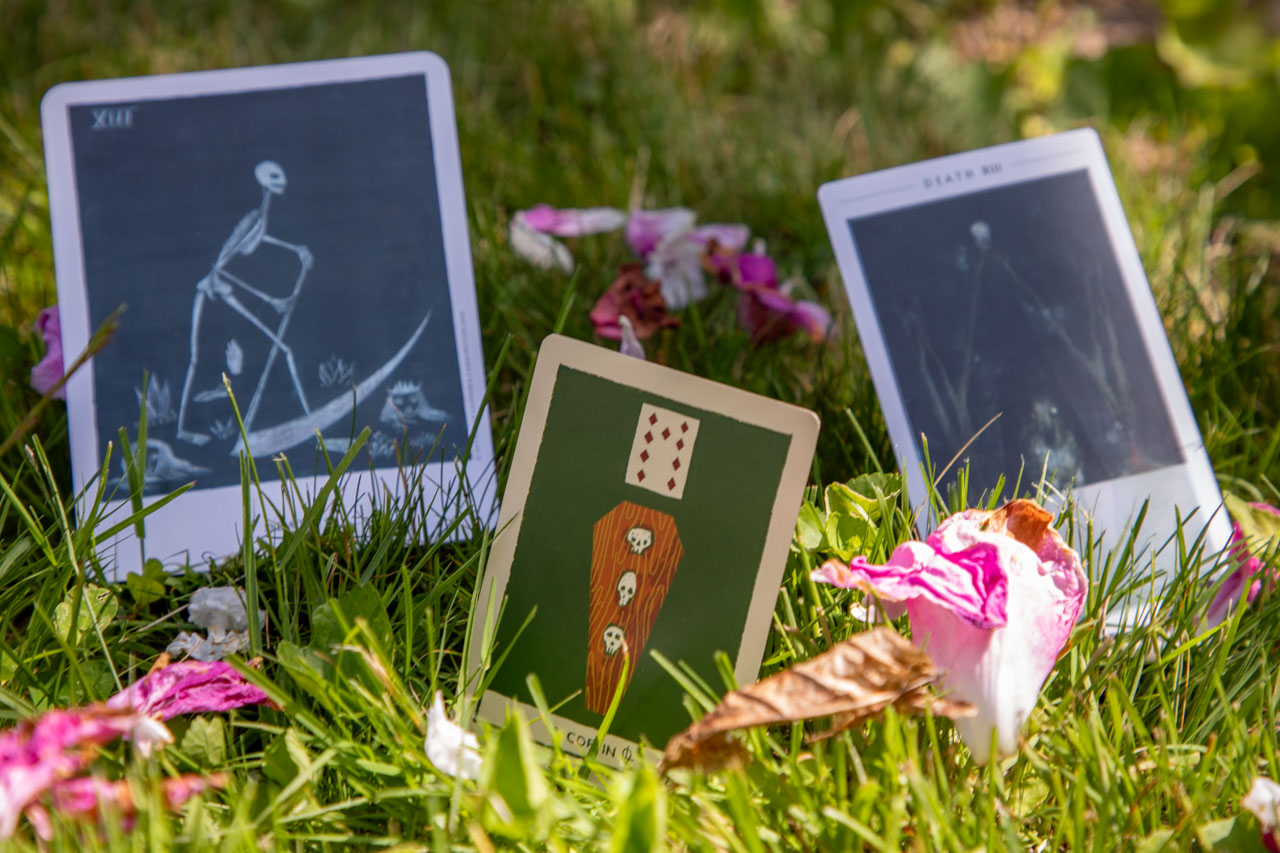Death and the Coffin


Cards shown, from left: Death from The Tarot of Leonora Carrington; The Coffin from Green Glyphs Lenormand; Death from The Fountain Tarot.
The first book I learned Lenormand from, Andy Boroveshengra’s Lenormand Thirty Six Cards, emphasizes that the Coffin card refers to endings:
The Coffin is about endings, not about transformations. Don’t confuse the two. Whatever falls immediately before the Coffin is set to end, and often the card that follows it is somewhat diminished or becomes sickly.
In practice this means that if a Coffin card appears in a Lenormand reading that points to a transformation, it is told from other cards rather than by the Coffin in and of itself. Transformation is not guaranteed with the Coffin, but can be a consequence of an ending.
Boroveshengra’s description of the Coffin feels like a pointed reaction to the way Tarot’s Death card is discussed: that the Death card is not always (or “almost never”) about death but “actually” about transformation. But what if Tarot’s Death was read like Lenormand’s Coffin? What if it is always about Death, and transformation is coming because something is dead?
Certainly, in the context of a reading, this archetypal concept of Death goes beyond your own death, the deaths of loved ones, or the death of human and animal people. Perhaps a state of being has died. A thoughtform has died.
Starting from a place of death instead of a place of transformation does not need to fundamentally change the interpretive outcome of the card, but the acknowledgement of death can provide more divinatory clarity to what comes after it. What is dying? Why? What did it feed on to live? What is going to eat it now? How does this death feel to you? It might be grief, mourning, despair, or regret. But it could also be relief, satiation, joy, or curiosity.
What can live now?
These questions can be miserable. Sometimes I think too deeply about the necessity of Death in the cycle of Living and overwhelm myself. I told this story in Reflections on Decomposition after I got home from Maasai Mara National Reserve:
A mother Lion and her cubs polished off a Wildebeest, while a crew of Vultures, Eagles, and Jackals milled behind them impatiently for their turn. This scene plays out millions of ways, everywhere, at all times, but only certain biomes can support the size of life that makes it this dramatic and bloody to witness. I thought about it while I was watching a Northern Cardinal twist and turn in the air after a little Cabbage White butterfly.
Everything that’s alive needs to consume the death of something in order to live, so Death is as mundane as it is enormous and frightening.
The need and urge to acknowledge Death crosses species. Elephants and Crows hold funerals. Trees release warnings to one another when invaded by parasites. When this arcana appears in our readings, can we take a moment to honor that need and bravely, specifically, name Death before looking ahead?
• • •
Receive this essay in the mail! Available from my Ko-fi shop, the zine unfolds to reveal a spread to help you interpret the Death card in any reading.